A long-tailed, bulky, green bird that bounces agilely through evergreen forest canopies in pairs or small groups.
Meet the Knysna turaco
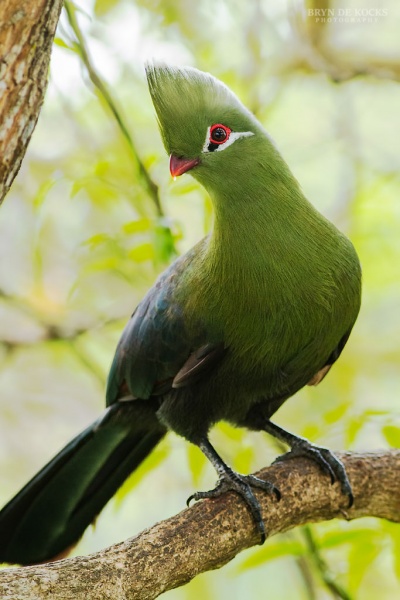
The Knysna turaco (Tauraco corythaix), is an unmistakable bird measuring 40 – 42 cm long, including the tail. The most conspicuous feature of this bird has to be the red primary feathers which only really stand out in flight. The small but thick orange-red bill and white eyeliner contrast against mainly green plumage.

Photo Courtesy of Gerry Zambonini / CC BY-SA 2.0
There is a tall green white-tipped crest, brown eyes finished off with an eye-ring of deep red.
Males and females look quite similar, however, juvenile birds are distinguished by a shorter crest without the white tips.
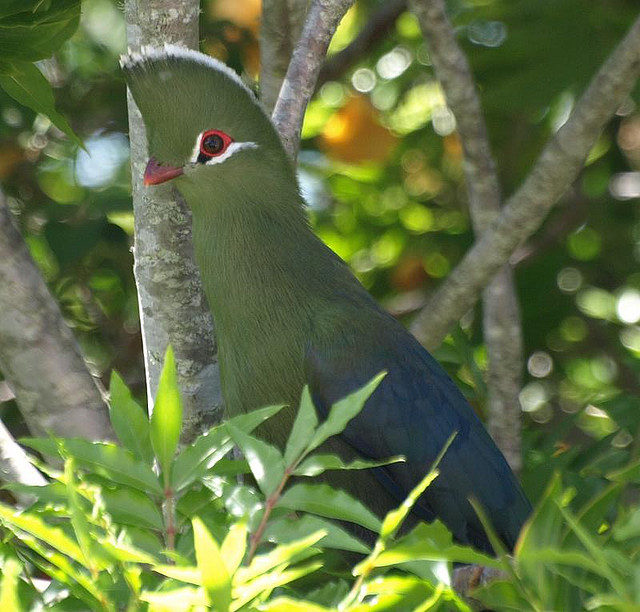
Photo Courtesy of Steve Hughes, Flickr user: Yosser – Flickr / CC BY 2.0
Knysna turaco are resident breeders in the mature evergreen forests of southern and eastern South Africa, occurring in the narrow strip of forest in Africa from North East Transvaal through Natal, Cape Province, and Mozambique.
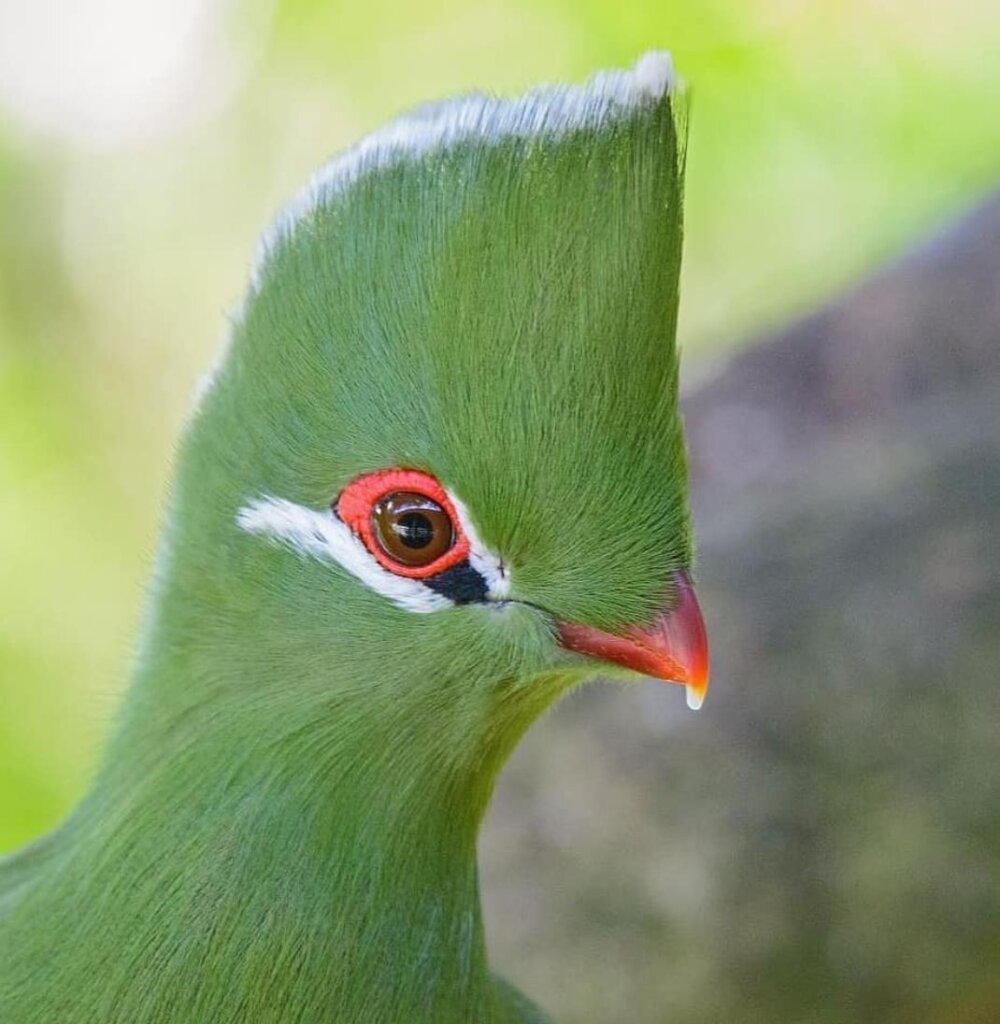
Photo Courtesy of Instagram/@dvasbirder
These birds can be found in the evergreen coastal forests extending from the Western Cape through to Mpumalanga, including eSwatini, up to an altitude of 1800 m.
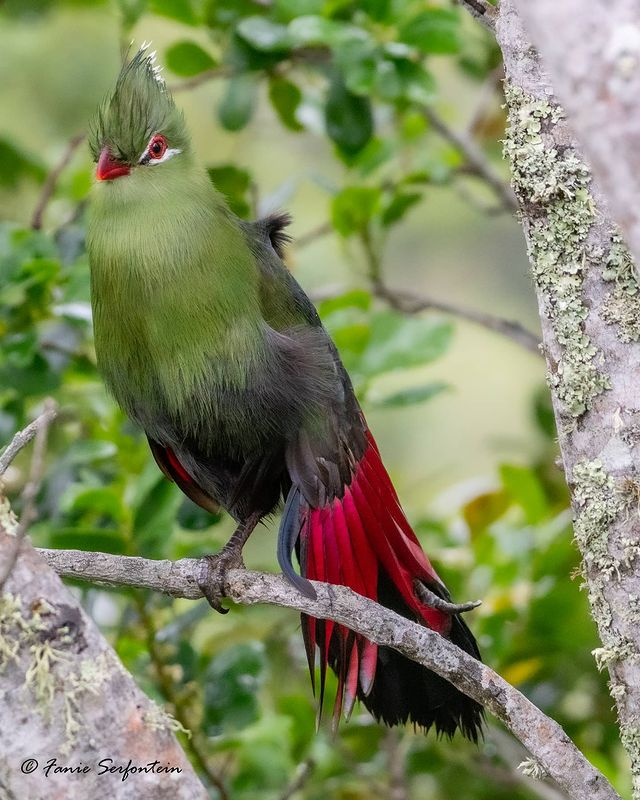
Dining mainly on berries and fruit, turacoes will sometimes supplement their diet with seeds, leaves, and insects.
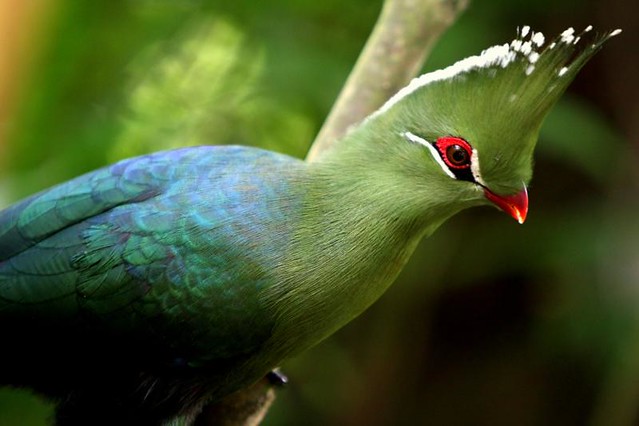
During the breeding season, both sexes build an insubstantial nest out of twigs in a deep thicket. Two eggs are laid within and incubated for around 21 days. The chicks start flying at around 28 days and are dependent on the adult birds for 3 to 4 weeks. It takes around 1 full year for the Knysna lourie juveniles to develop their adult plumage.
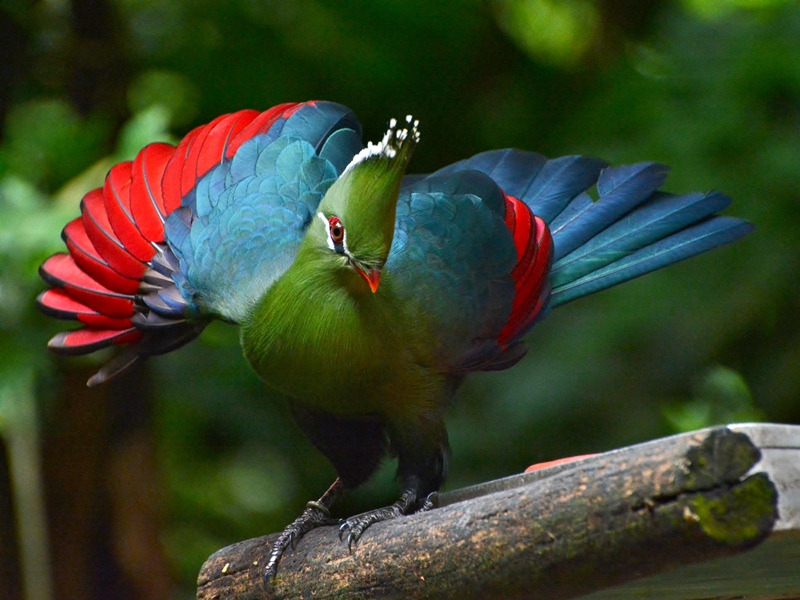
Knysna turaco are regarded as of least concern on the IUCN Red List.
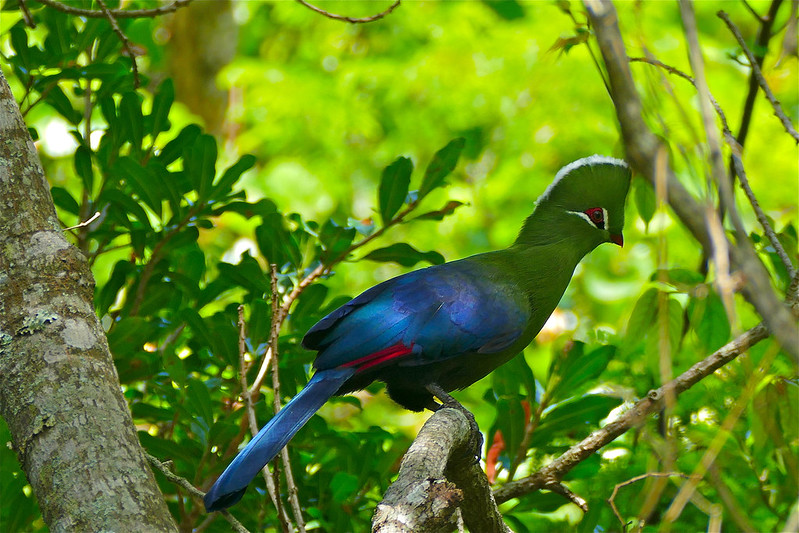
Photo Courtesy of Bernard DUPONT / CC BY-SA 2.0
You can watch and listen to this bird right here in the video below:




